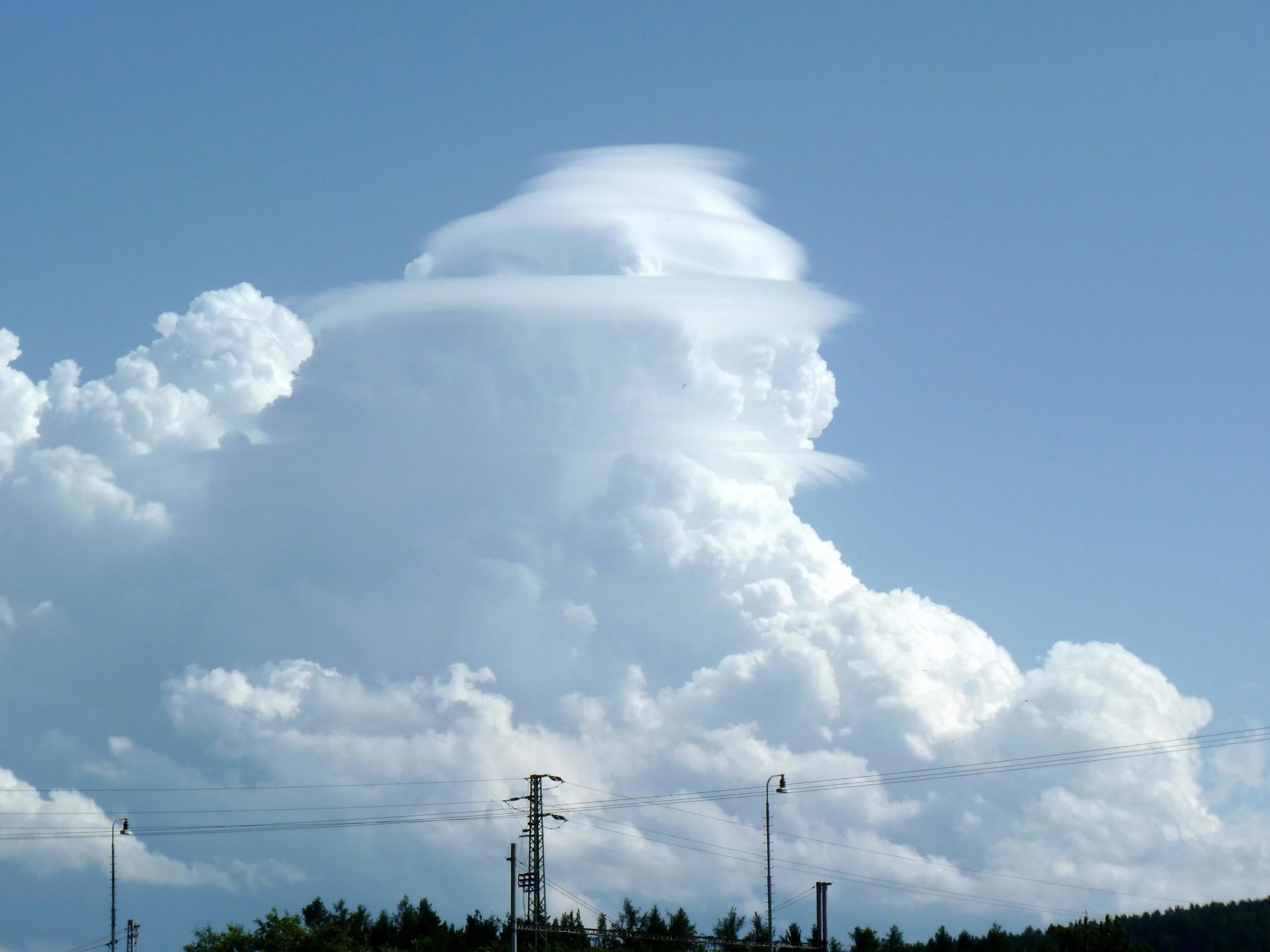In Literature Appetizer, Ben gives you just a taste of a book. Not meant to replace the full meal, this is meant to whet your appetite. Bon appetit!
At Allegheny College I took one art class: Drawing 101. I really dislike saying "I can't draw" but I was definitely one of the worst in this class. One of the phrases that stuck with me from my professor was "draw what you actually see, not what you want to see." When you actually start to see what is around, instead of what you think you see, the trees never are one-large-straight-trunk but rather a twisting formation of bark and branches. The Cloudspotter's Guide by Gavin Pretor-Pinney got me to appreciate clouds for what they are, instead of how I imagine them to be.
Take a look at this cloud, and mentally jot down what you see:
Uploaded to WikiCommons by Marra38.
Before reading this book I would have said "Big fluffy clouds..." but take a closer look! Do you see at the top of the mound what looks like a paintbrush stroke? So on this largely cumulus system, there are three Pileus clouds. What are they? They are formed a little differently than cumulus and are a sign of a serious storm to come. Just by a little bit of looking, "big fluffy clouds" turn into a story of what has happened, and what is to come.
If you are a meteorologist or a passive watcher of the sky, this is an ideal book for you. It is dense enough to provide accurate, scientific terms but also provides countless stories of people and clouds; everything from surfing the clouds in Australia to falling through a thunderstorm.
As amazing as cloud pictures are, Petor-Pinney urges us to actually go outside and see the clouds above us. Just as you can't fully understand a person by one photograph...
“We need to watch a person’s expression change from one moment to the next to say how they are. Likewise, beautiful Cirrus spun across the heavens will tell us little about the mood of the atmosphere. To know this, we must have the patience to watch the expressions develop.”


